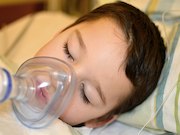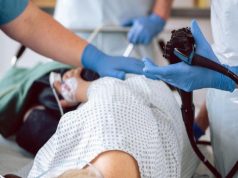Adverse outcomes more likely to develop in children with multiple exposures before age 3
THURSDAY, April 26, 2018 (HealthDay News) — Children with multiple exposures to anesthesia before age 3 are more likely to develop adverse outcomes related to learning and attention, according to a recent study published in Anesthesiology.
Danqing Hu, M.D., from the Mayo Clinic in Rochester, Minn., and colleagues retrospectively identified a cohort of children born between 1996 and 2000. Propensity matching selected children based on exposure or non-exposure to general anesthesia before age 3. This identified 116 children multiply exposed, 457 singly exposed, and 463 unexposed children.
The researchers found that those with multiple, but not single exposures, had an increased frequency of both learning disabilities and attention-deficit/hyperactivity disorder (hazard ratio for learning disabilities, 2.17) versus unexposed children. Further, multiple exposures were associated with decreases in both cognitive ability and academic achievement. There was a modest association between single exposures and decreases in reading and language achievement but not cognitive ability.
“These findings in children anesthetized with modern techniques largely confirm those found in an older birth cohort and provide additional evidence that children with multiple exposures are more likely to develop adverse outcomes related to learning and attention,” the authors write. “Although a robust association was observed, these data do not determine whether anesthesia per se is causal.”
Copyright © 2018 HealthDay. All rights reserved.








